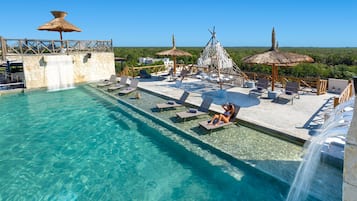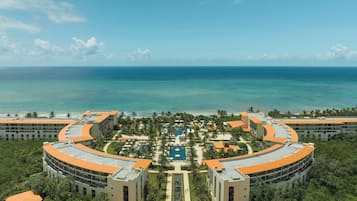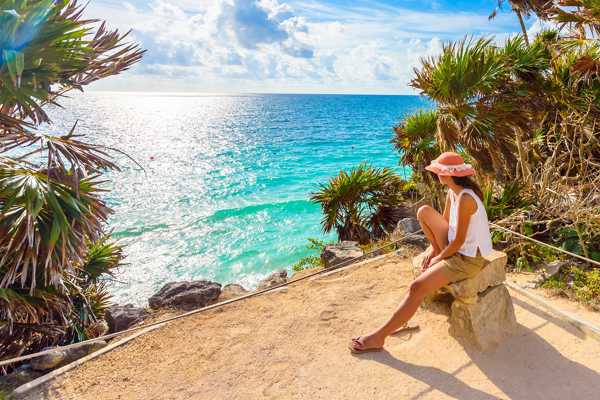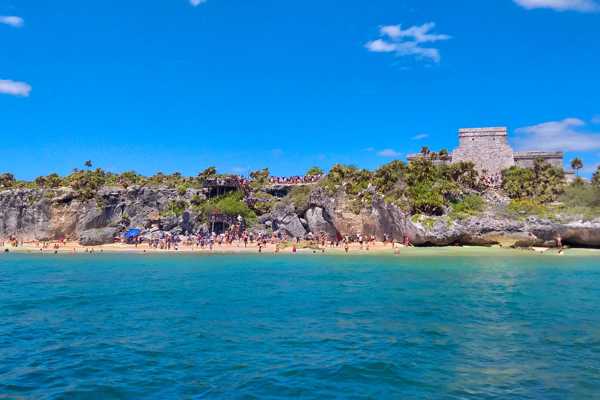Xel-Há is an ancient Mayan settlement on the Caribbean side of the Yucatan peninsula that once served as a major port for the area. Its location at an inlet gave rise to its importance as a centre for trade, pilgrimage, and shelter for sailors.
You can wander along the jungle trails to find the remains of stone structures, as well as some well-preserved murals and 2 freshwater pools called cenotes. Xel-Há is not as well-known as the nearby Tulum Ruins, making it worth a visit for those hoping to avoid the crowds.
The Xel-Há ruins are found just a 5-minute drive away across the highway from the similarly named Xel-Há Park, so you could easily enjoy the theme park’s waterslide, zipline and river tour action on the same day. The site usually takes about an hour to explore, with a small admission fee charged at the entry.
Xel-Há Archaeological Site Near Tulum - one of the highlights of 10 Best Things to Do with Your Family in Tulum and 10 Best Family Things to Do in Riviera Maya (Read all about Tulum here)

fotoğraf: Dennis Jarvis (CC BY-SA 2.0) değiştirildi
A brief history of the Xel-Há Archaeological Site
Xel-Há means “mixing of the water” in the Mayan language, which is an apt description of this ancient settlement and port set on an inlet where fresh and salt water met.
The oldest archaeological remnants found here date back to 100 BC, with the remains of masonry structures built in a Tikal architectural style from as far back as 250–600 AD. Xel-Há structures from the Late Classic period of 600–900 AD were built on top of earlier structures, while the construction of more elaborate structures flourished in the Post Classic period of 1,000–1,525 AD when Xel-Há was part of Yucatan’s Ekab province. The settlement was abandoned soon after the arrival of the Spanish Conquistadors in the 1520s.
Historical evidence suggests that Xel-Ha also had a place of importance for Mayan spiritual pilgrimages. The settlement would have offered direct access to Cozumel island, then known as Ixchel, and was thought to be a site for women and couples to pay homage to the goddess of fertility.
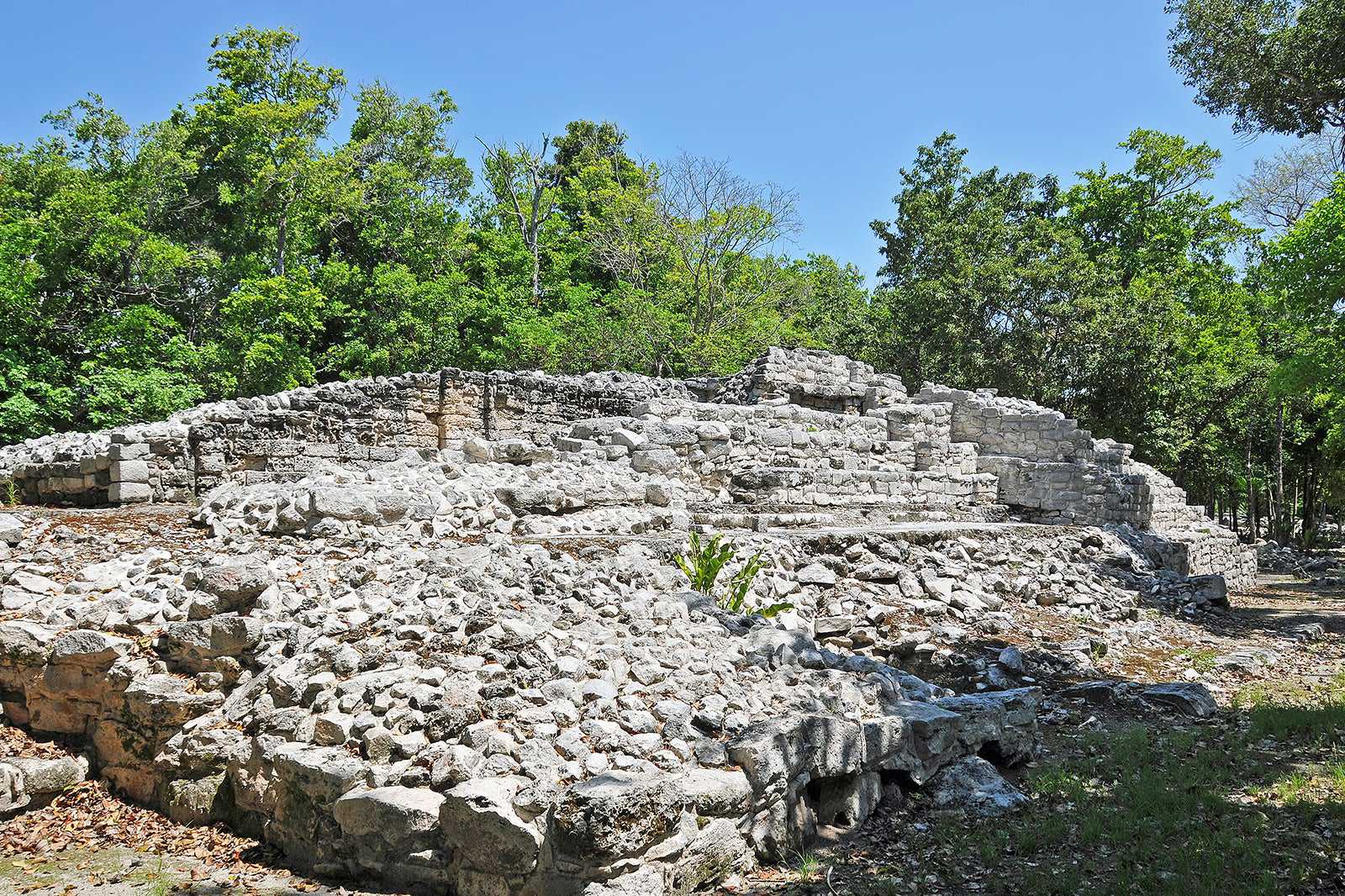
fotoğraf: Dennis Jarvis (CC BY-SA 2.0) değiştirildi
Architectural and design features at the Xel-Há Archaeological Site
The layout of Xel-Há has 4 main groups, with the most important structures based in the central Group B area. Here, you'll find a palace-like building called the House of Birds, which has a well-preserved mural with birds in different poses and another mural with four painted panels and a god-like image with a feathered headdress. Another notable structure in Group B is El Palacio, the remains of which hint at an Early Classic style of vaulted ceilings and sloped walls.
A structure called the Jaguar Temple is in Group C, on a shared platform with 4 other temples near a cenote. Its walls are covered in murals, including one with a jaguar image. The Lothrop Group contains several bases and platforms on a former residential complex dating back to the late Post-Classic period. Its elliptical-shaped layout is a design feature unique to Xel-Há.
Good to know about Xel-Há Archaeological Site near Tulum
The Xel-Há Archaeological Site is along Highway 307, about 400 metres south of the entrance to Xel-Há Park. The easiest way to get there is by joining a guided tour, which usually includes stops at other nearby ruins and Xel-Há Park.
A cheaper option would be to catch the local colectivo, a shared van service that runs between Tulum and Playa Del Carmen and ask the driver to let you off at Xel-Há. For the return trip, just wait at the roadside and flag down any vans passing by in the direction you need to go.
Independent travellers willing to spend a bit more to get around could rent a car at Tulum or Playa Del Carmen and make the 30-minute drive to the ruins. Taxi service is also available, but it’s not a very budget-friendly option.
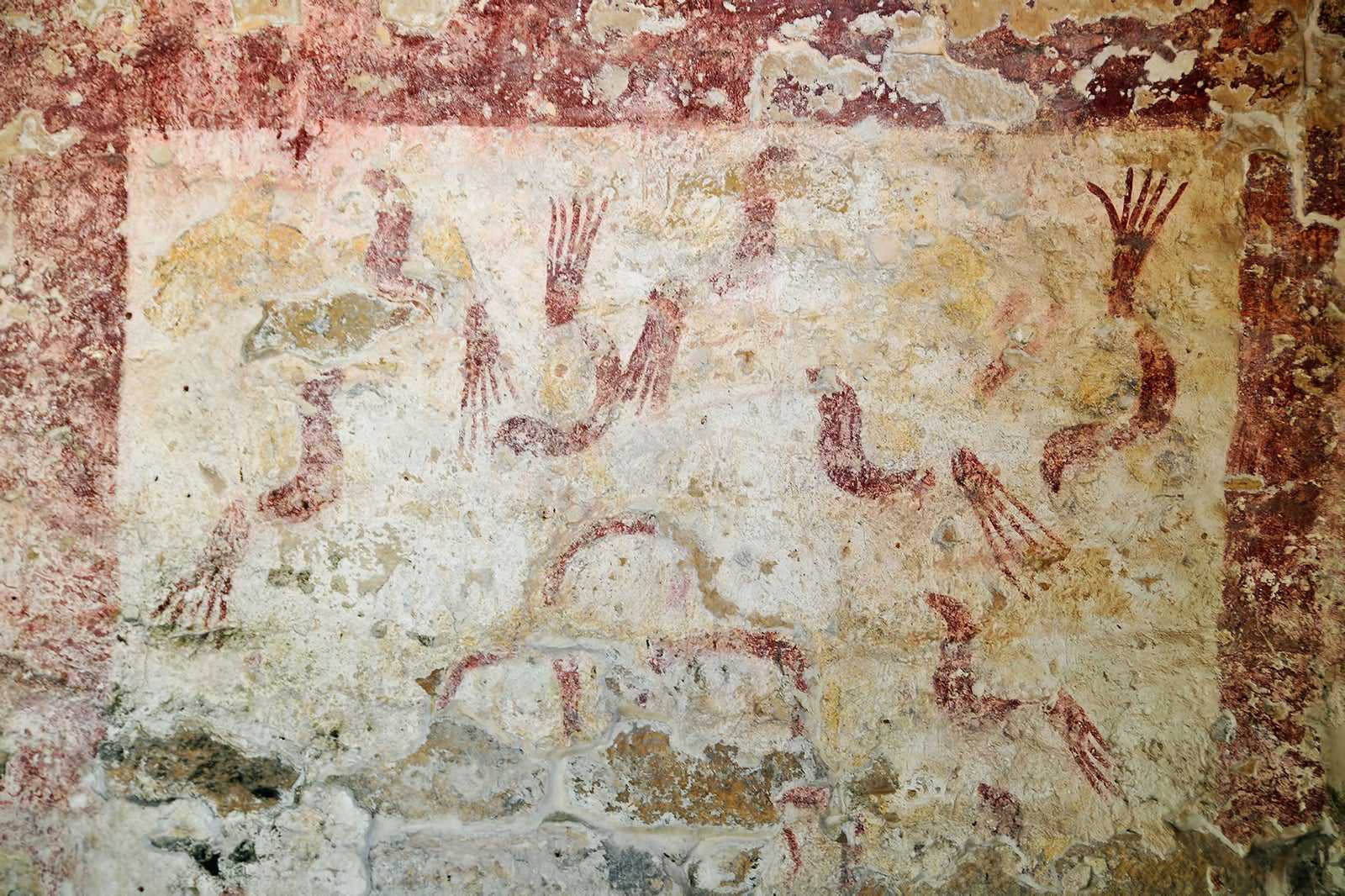
fotoğraf: Dennis Jarvis (CC BY-SA 2.0) değiştirildi
Xel-Há Archaeological Site Near Tulum
Konum: México 307, Quintana Roo, Mexico
Açık olduğu saatler: Daily from 8 am to 5 pm
Telefon: +52 983 837 2411




